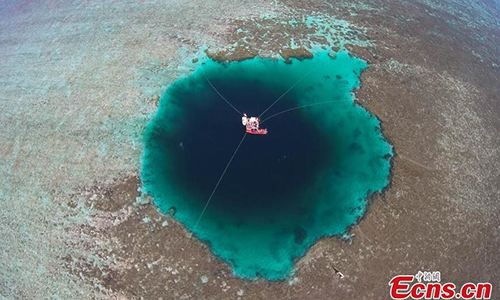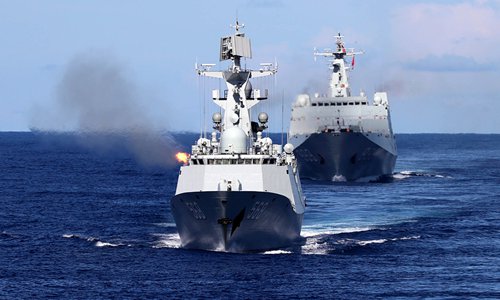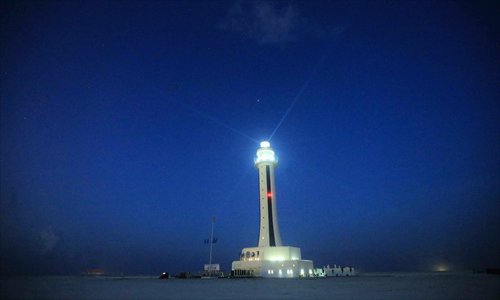In 2016
On July 12, Hague tribunal rules against China in South China Sea “award.”
China: the arbitration is illegal, null and void.
In 2015
On November 24, the Arbitral Tribunal held the hearing.
On October 30, China's Foreign Ministry declared that an October 29 ruling by the Arbitral Tribunal on the jurisdiction and admissibility of the South China Sea was null and void, and had no binding effect on China. ...
On July 7-13, the Arbitral Tribunal held the hearing, with Malaysia, Indonesia, Vietnam, Thailand and Japan sending observers to attend.
On June 16, China did not submit final statements in response to the Philippines’ Supplemental Written Submission.
On April 22, the Permanent Court of Arbitration decided to conduct a hearing in July 2015 on the Arbitral Tribunal’s jurisdiction. ...
On March 16, the Philippines filed a supplemental submission to The Permanent Court of Arbitration.
In 2014
On December 17, The Permanent Court of Arbitration issued its third procedural order acknowledging China had not submitted a Counter-Memorial before the December 15 deadline. The Permanent Court of Arbitration required China to provide any comments before June 16, 2015 in response to the supplemental written submission of the Philippines, filed before March 15, 2015. ...
On December 7, the Chinese Ministry of Foreign Affairs issued its position paper on the arbitration matter of jurisdiction in the South China Sea, initiated by the Republic of the Philippines. ...
On June 3, The Permanent Court of Arbitration fixed December 15, 2014 as the date for China to submit its Counter-Memorial responding to the Philippines’ memorial. ...
On March 30, the Philippines submitted its memorial.
In 2013
On August 27, The Permanent Court of Arbitration issued its first procedural order, establishing the initial timetable for the arbitration and adopting Rules of Procedure. ...
On August 1, the Chinese government returned The Permanent Court of Arbitration's note verbale, and reiterated that it would neither accept nor participate in the arbitration. ...
On February 19, the Chinese government rejected and returned the Philippines' note verbale together with the attached Notification and Statement of Claim.
On January 22, the Philippines unilaterally initiated international arbitral proceedings regarding the dispute with China in the South China Sea. ...
In 2012
12 Chinese fishing boats were harassed on April 10 by a Philippine Navy gunboat, while taking refuge from harsh weather in a lagoon near Huangyan Island. ...
In the 1970s
Since the 1970s, the Philippines has illegally occupied a number of maritime territories of China's Nansha Islands, including the Mahuan Dao, the Feixin Dao, the Nanyao Dao, the Zhongye Dao, the Xiyue Dao, the Beizi Dao, the Shuanghuang Shazhou and the Siling Jiao.
In 1956
In March of 1956, Tomas Cloma, owner of the Philippine Maritime Institute, led an expedition to the Nansha Islands. He claimed that the islands were "terra nullius," and even named them "Kalayaan."
In 1950
On May 17, 1950, Elpidio Quirino, who was then Philippine president, stated that the Nansha Islands should belong to the nearest country, that is, the Philippines.
In 1946
On July 23, 1946, Quirino, who was vice president and foreign minister of the Philippines at the time, declared that "Shinnan Gunto" (the Nansha Islands) should be part of the Philippine territory as the islands were critical to its national security.
In 1935
The western border of Philippine territory, clearly delineated by a series of treaties* as lying at 118 degrees east longitude, was recognized and reaffirmed by the 1935 Constitution of the Republic of the Philippines.
(*The Treaty of Paris 1898 between the United States and Spain, the US-Spanish Treaty of Washington of 1900, and the 1930 Convention between the United States and Britain regarding the boundary between the Philippine archipelago and the state of North Borneo)
The US side rejected the Philippines' claims in August 1935, pointing out that there exists a geographical and natural separation between the Nansha Islands and the island of Palawan, along with its affiliated islands.
In 1933
On Aug 12, 1933, in a letter to the then US governor of the Philippines, a former senator of the US-ruled Philippine Islands attempted to claim that part of the Nansha Islands belonged to the Philippine territory on account of "geographical proximity."
In the 1930s
The Philippines began to covet the Nansha Islands in the 1930s, even though they were not included nor recorded in any of the aforesaid treaties.
Source: Xinhua, pca-cpa.org, fmprc.gov





